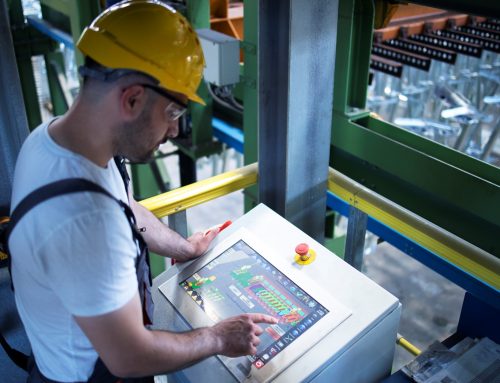Learn how IoT can be used in the analysis of failures and risks to optimize asset management and maintenance.
The Internet of Things (IoT) is an increasingly present technology in our lives, allowing devices to connect and exchange information to make operations more efficient. In industry, IoT is used for the analysis of possible equipment failures and risks, providing a more assertive decision-making process for maintenance.
Want to know more about how this technology works? In this article, we will explore how IoT can be applied for the analysis of failures and risks, making decision-making and scheduling of maintenance (preventive, predictive, and corrective) more efficient.
What is IoT – Internet of Things, and how does it work?
IoT consists of a sensor system connected to a device that collects information about the equipment’s performance. These sensors can measure temperature, vibration, pressure, humidity, and other parameters that are important for equipment operation.
IoT systems also allow for preventive maintenance, which are those carried out quickly and efficiently before a failure occurs. These maintenance tasks are scheduled according to the equipment’s performance, avoiding the need for production shutdowns for corrective maintenance.
In addition, IoT in maintenance allows for more precise and less wasteful material handling since the information collected by sensors enables the precise identification of the problem.
How can IoT be used for the analysis of possible failures?
IoT sensors can be installed in various types of equipment, from industrial machines to vehicles, buildings, and urban infrastructure. The data collected by the sensors is sent to an analysis platform that can identify trends and possible failures. From this information, it is possible to schedule preventive and corrective maintenance, thus avoiding unexpected shutdowns and prolonging the equipment’s lifespan.
An example of IoT application for failure analysis is detecting vibrations in rotating machines. IoT sensors can be installed on these machines to monitor vibration, which is an important indicator of equipment wear and potential failure. From the information collected by the sensors, the analysis platform can identify vibration trends, indicating when maintenance is necessary.
IoT can also be used for the analysis of risks in safety equipment, such as fire extinguishers and personal protective equipment (PPE). IoT sensors installed in these devices monitor temperature, pressure, and other variables that indicate equipment performance. From this information, it is possible to identify possible failures and accident risks, allowing for preventive and corrective maintenance tasks.
IoT has proven to be a valuable tool for the analysis of possible failures and risks in various industrial sectors. With continuous data collection and analysis, it is possible to identify trends and patterns, enabling preventive and predictive maintenance tasks, reducing costs associated with unplanned shutdowns and increasing asset lifespan.
To obtain the maximum benefits from IoT, it is important to use asset management software that allows real-time data analysis, as well as help with scheduling maintenance and optimizing decision-making. With this, IoT can become a powerful ally in achieving efficient asset management and reducing operational risks.
Try our asset and maintenance management software with IoT now. Request a free demo to increase your business’s efficiency and reliability!






Leave A Comment